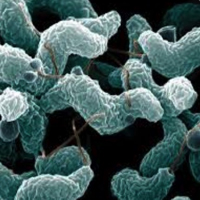 Smart Citations
Smart CitationsSee how this article has been cited at scite.ai
scite shows how a scientific paper has been cited by providing the context of the citation, a classification describing whether it supports, mentions, or contrasts the cited claim, and a label indicating in which section the citation was made.
Detection and quantification of Campylobacter in foods: New analytic approaches to detect and quantify Campylobacter spp. in food samples
The aim of the present study was to develop rapid qualitative and quantitative methods based on the use of Real-Time PCR and Droplet Digital PCR (ddPCR), in order to have reliable techniques to detect and quantify Campylobacter spp. in food samples. The gene 16S-rRNA was used as specific target for Campylobacter spp. Real- Time PCR evaluation assay and a not competitive internal control was ushered in it. To investigate the selectivity of the method, 26 Campylobacter strains and 40 non-Campylobacter strains were tested and in order to verify the application of Real-Time PCR method, 5 pork meat samples were experimentally inoculated with a Campylobacter jejuni strain. Subsequently, dilutions with a bacterial load of Campylobacter jejuni within 10-106 CFU/mL were chosen for the optimization of the ddPCR assay. Lastly, a total of 54 naturally contaminated foods samples were analyzed through molecular (Real-Time PCR and ddPCR) and traditional methods. The Real-Time PCR protocol demonstrated to amplify only the Campylobacter spp. strains and when Campylobacter jejuni was experimentally inoculated in meat samples the pathogen was always detected. The ddPCRs assay allowed to quantify a level of contamination of 10 CFU/mL, but it was unable to quantify levels of 105 – 106 CFU/mL. Lastly, Campylobacter spp. was never detected in the 54 samples tested. In conclusion, the novel analytic approach proposed, based on an initial screening of the samples with Real-Time PCR and then on quantification of Campylobacter spp. with a ddPCR on those positive, represents a quick monitoring tool and, if used correctly, it would allow the implementation of food safety.
How to Cite
PAGEPress has chosen to apply the Creative Commons Attribution NonCommercial 4.0 International License (CC BY-NC 4.0) to all manuscripts to be published.

 https://doi.org/10.4081/ijfs.2020.8591
https://doi.org/10.4081/ijfs.2020.8591




